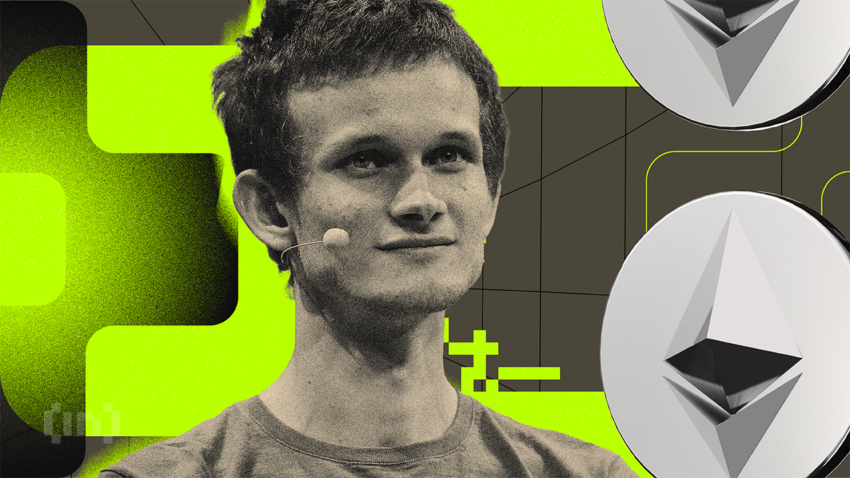As blockchain technology progresses, the appearance of Layer 3 (L3) has triggered an extensive conversation among industry experts and developers alike. Vitalik Buterin, the co-founder of Ethereum, has recently joined the ongoing discussions.
Vitalik Buterin took to X (Twitter) to share an old article titled “What kind of layer 3s make sense?”. He originally wrote the article back in 2022. While the article itself was not new, Buterin’s decision to repost it has sparked conversations about the needs of L3 in the blockchain and crypto industry.
Buterin Thinks L3 Could Be a Good Idea if Done “In a Good Way”
As a pivotal figure in blockchain innovation, Vitalik Buterin elucidates that while the theoretical appeal of L3—stacking scalability solutions to achieve exponential scaling—is compelling, practical implementation faces technical hurdles. These include limitations related to data availability and bandwidth constraints for emergency withdrawals.
His insights draw from years of research into blockchain scalability, including seminal works such as the 2015 scalability paper and contributions to the Plasma framework.
Contrary to simplistic stacking approaches, newer L3 frameworks, exemplified by Starkware’s proposals, suggest assigning distinct roles to L2 and L3. Starkware, renowned for its cryptographic expertise, suggests L3 could focus on tailored functionalities like privacy or application-specific optimizations, diverging from solely emphasizing scalability.
Read more: A Beginner’s Guide to Layer-2 Scaling Solutions
Although Vitalik Buterin recognized the sophistication of the newer L3 framework proposed by Starkware, he conveyed that it could be a good idea if done “in a good way.”
“I suspect more sophisticated (and simpler) constructions such as those described in this post will start to have a bigger role to play as the layer 2 scaling ecosystem matures,” Buterin wrote.
The Limitations of L1 and L2
L3 emergence has led to discussions because it is considered a critical component in blockchain technology infrastructure. Many believe in its ability to improve the scalability and efficiency of blockchain networks and facilitate the creation of new decentralized applications (Dapps). The importance of L3 in the blockchain ecosystem cannot be overstated, and the industry is closely monitoring its development.
L3 technologies are envisaged as a groundbreaking stride beyond the existing Layer 1 (L1) and Layer 2 (L2) solutions. L1, the blockchain base layer, such as Ethereum, provides fundamental security and decentralization. L2, on the other hand, operates on top of L1 to enhance scalability. Meanwhile, L3 aims to further scale blockchain networks by anchoring them into L2 for security, potentially offering exponential scalability benefits.
Among the examples of emerging L3 projects, StarkNet and Arbitrum Orbit stand out. StarkNet proposes using Validium for data availability, catering to applications requiring heightened sensitivity to cost. Arbitrum Orbit, similarly, aims to provide custom scaling solutions that could better serve specific application needs. These initiatives illustrate a nuanced approach to L3 development, recognizing the diversity of blockchain applications’ requirements.
Read more: A Deep Dive Into Starkware, StarkNet, and StarkEx
Skepticism Around the Discourse
However, some people criticize the discourse around L3. Marc Boiron, CEO of Polygon Labs, pointedly challenges the necessity of L3. He argued that L3 may siphon value from Ethereum’s ecosystem to the L2s they build upon. His skepticism reflects a broader debate within the crypto community about the strategic value and implications of L3 technologies.
“I’ll say the quiet part out loud: L3s exist only to take value away from Ethereum and onto the L2s on which the L3s are built. You do not need L3s to scale. And this is why Polygon Labs does not work on L3s,” Boiron stated.
Despite varying viewpoints, there is a lot of discussion about L3 and its potential to be one of the most fascinating innovations in the cryptocurrency industry. L3 can provide customized functionalities and scalability solutions, which hold a promise to transform the future outlook of blockchain technology. However, as L3 is still in its early stages, its effectiveness and impact are yet to be fully realized.
Disclaimer
In adherence to the Trust Project guidelines, BeInCrypto is committed to unbiased, transparent reporting. This news article aims to provide accurate, timely information. However, readers are advised to verify facts independently and consult with a professional before making any decisions based on this content. Please note that our Terms and Conditions, Privacy Policy, and Disclaimers have been updated.


